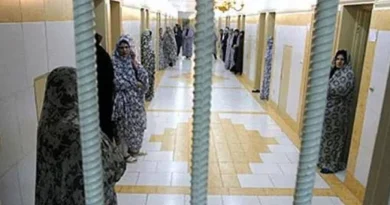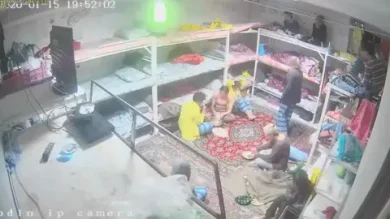In Iran, the hijab is more than a piece of clothing—it is a symbol of state control, gender oppression, and defiance. Since the 1979 Islamic Revolution, Iranian authorities, particularly the Islamic Revolutionary Guard Corps (IRGC) and the morality police, have enforced strict dress codes on women, making the mandatory hijab a tool of repression. However, Iranian women have been resisting for decades, using acts of defiance to reclaim their bodily autonomy and freedom.
The “Women, Life, Freedom” movement, sparked by the death of Mahsa Amini in 2022, further intensified the fight against forced hijab laws, leading to nationwide protests, civil disobedience, and international solidarity.
This resource explores:
• The history of mandatory hijab laws in Iran.
• Women’s resistance through protests and social movements.
• The role of the IRGC in enforcing dress codes.
• Consequences and risks for women defying hijab laws.
• Global reactions and support for Iranian women’s fight against forced veiling.
1. The History of Iran’s Mandatory Hijab Laws
A. Pre-Revolution Iran: The Fight for Choice
Before the 1979 Islamic Revolution, Iranian women had the freedom to choose whether to wear the hijab or not. Under Reza Shah Pahlavi (1936), the government even banned the hijab in an attempt to modernize the country. However, during the rule of Mohammad Reza Pahlavi, women were given the choice to wear the hijab, and both veiled and unveiled women coexisted in public spaces.
B. Post-Revolution: The Hijab Becomes Compulsory
With the rise of Ayatollah Khomeini and the establishment of the Islamic Republic, the regime imposed strict Islamic dress codes, requiring:
• A headscarf (hijab) to cover the hair.
• Loose clothing to conceal the body.
• Punishments for those who refused to comply.
By 1983, the Iranian government made hijab mandatory by law, and violators faced public humiliation, fines, arrests, and lashes. The IRGC and morality police became key enforcers of this law, ensuring women adhered to strict dress codes.
2. Women’s Resistance Against the Mandatory Hijab
A. Early Opposition and Protests
• In 1979, just weeks after the revolution, thousands of women marched in Tehran against the new hijab laws, chanting “We did not have a revolution to go backward!”
• Over the decades, women engaged in silent acts of resistance, such as wearing colorful headscarves, loose hijabs, and even removing them in public spaces.
B. The “My Stealthy Freedom” Movement
In 2014, Iranian journalist Masih Alinejad launched #MyStealthyFreedom, an online movement where women posted photos of themselves without hijabs. This digital rebellion gave Iranian women a platform to defy the law and expose state oppression.
C. White Wednesdays and Girls of Revolution Street
• White Wednesdays (2017) encouraged women to wear white scarves in public or remove their hijabs as an act of defiance.
• Vida Movahed, later known as “The Girl of Revolution Street”, stood on a utility box in Tehran, waving her hijab as a flag. Her arrest inspired many other women to follow.
D. The Mahsa Amini Uprising (2022-Present)
The death of Mahsa Amini, a 22-year-old Kurdish woman arrested by the morality police for “improper hijab,” ignited nationwide protests. Women took to the streets, burning their hijabs, cutting their hair, and chanting “Women, Life, Freedom.”
• The protests spread globally, sparking demonstrations in Europe, the U.S., and Canada in solidarity with Iranian women.
• The movement led to mass arrests but strengthened the call for ending mandatory hijab laws.
3. The IRGC’s Role in Enforcing Dress Codes
The IRGC plays a central role in enforcing Iran’s strict hijab laws. It does so through:
• Morality police (Gasht-e Ershad), who patrol the streets to monitor women’s clothing.
• Surveillance technology, including facial recognition cameras, to track women violating dress codes.
• Harsh punishments, including arrests, torture, and imprisonment for women who remove their hijabs in public.
A. Crackdowns and Punishments
Women caught without a hijab have faced:
• Public beatings and harassment.
• Arrests and forced confessions aired on state TV.
• Expulsion from universities and workplaces.
Even celebrities, athletes, and journalists have been targeted for defying hijab laws, showing how the regime views clothing as a political tool.
4. Risks and Consequences of Defying the Hijab Law
A. Arrests and Harassment
Women who remove their hijabs face imprisonment, torture, and even forced disappearances. Many activists, including Narges Mohammadi and Nasrin Sotoudeh, have been jailed for challenging Iran’s gender apartheid laws.
B. Digital Censorship and Internet Blackouts
To prevent activists from organizing, the Iranian government shuts down the internet, censors content, and blocks access to platforms like Instagram, Twitter, and Telegram.
C. Economic and Social Repercussions
Women who defy hijab laws risk:
• Losing their jobs and education opportunities.
• Facing travel bans and restrictions.
• Being ostracized or targeted by security forces.
Despite these severe consequences, Iranian women continue to resist.
5. Global Reactions and Support for Iranian Women
A. International Protests and Awareness Campaigns
• Protests erupted in major cities worldwide in support of Iranian women.
• The slogan “Women, Life, Freedom” became a global symbol of resistance.
B. Political and Diplomatic Pressure
• The U.S., EU, and Canada imposed sanctions on Iranian officials involved in human rights violations.
• The UN condemned Iran’s treatment of women, calling for an end to gender oppression.
C. Digital Activism and Tech Support
• Tech companies like Google and Starlink provided tools to bypass internet blackouts.
• Activists used VPNs and encrypted messaging apps to continue organizing.
D. Recognition of Iranian Women’s Fight
• Nobel Peace Prize awarded to Narges Mohammadi, a jailed Iranian activist, for her role in defending women’s rights.
• Global media gave Iranian women’s struggles a platform, amplifying their voices.
6. The Future of Women’s Resistance in Iran
The movement against mandatory hijab laws is stronger than ever. Women in Iran are:
• Refusing to comply with dress codes.
• Using social media to organize and spread awareness.
• Inspiring men and younger generations to join the fight for gender equality.
While the IRGC continues to crack down, the resistance remains unbroken. Iranian women are no longer just fighting for dress freedom—they are leading the fight for a free and democratic Iran.
Conclusion: Hijab as a Symbol of Rebellion
The hijab, once a tool of oppression, has become a symbol of rebellion. Iranian women, from activists to students, journalists to mothers, continue to resist state control with unparalleled courage. Their fight is not just about clothing—it is about freedom, autonomy, and human rights.
The world must continue to stand with them, ensuring their voices remain heard and their struggle for justice is not forgotten.
Join Our Newsletter!
Stay informed with the latest updates, news, and ways to take action in the fight for justice and global security. Sign up now to get updates delivered straight to your inbox!





